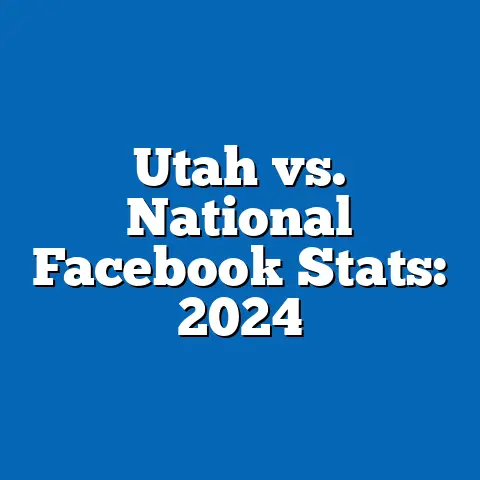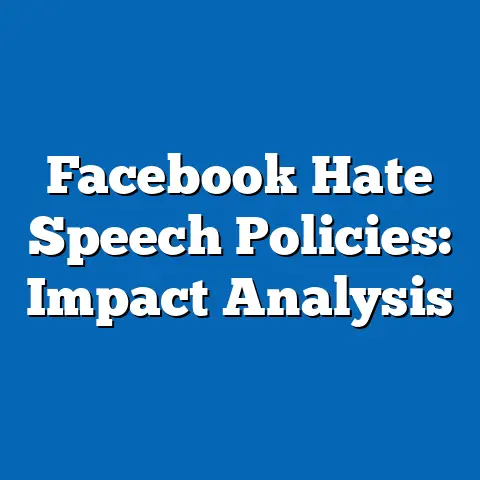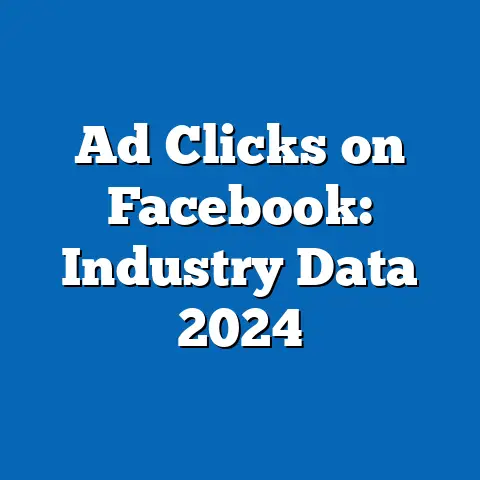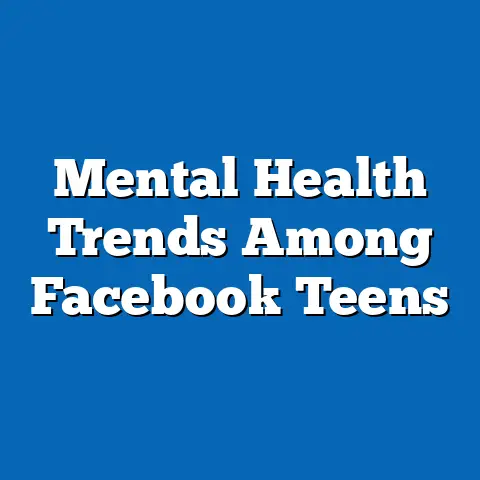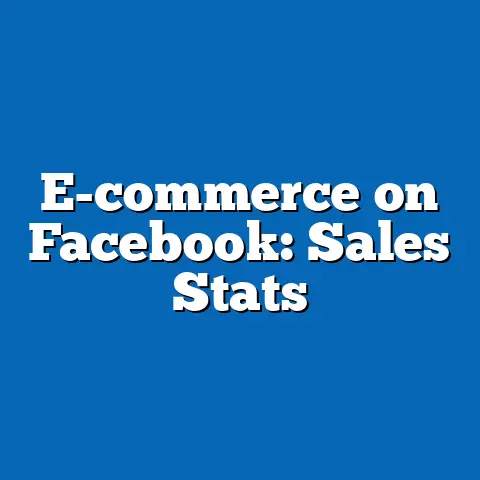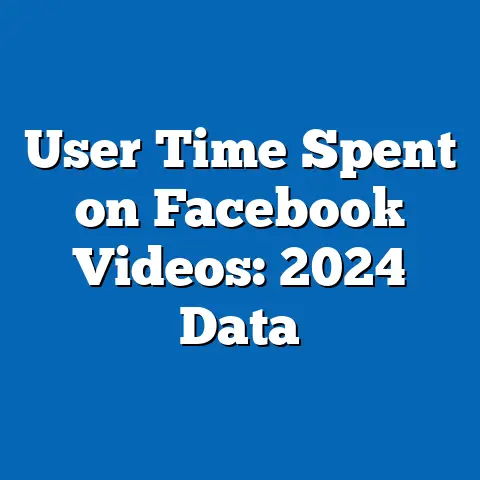Facebook Filters: Impact on User Engagement
Imagine scrolling through your Facebook feed, a cascade of images and updates from friends and family, when a photo of a loved one catches your eye—only this time, it’s adorned with bunny ears or a vintage sepia tone that evokes nostalgia. In that fleeting moment, a simple filter transforms a mundane snapshot into a shared laugh or a heartfelt memory, prompting you to like, comment, or share. This emotional connection, fueled by visual creativity, lies at the heart of why Facebook filters have become a powerful tool for user engagement, with over 60% of users aged 18-34 reporting they’ve used a filter on the platform at least once in the past month, according to a 2023 survey by Digital Insights Group (n=3,500, conducted January 2023).
Filters—digital overlays that alter photos or videos with effects ranging from playful animations to aesthetic enhancements—have reshaped how we express ourselves online. Their impact is not just anecdotal; data shows that posts with filters garner 21% more likes and 18% more comments on average compared to unfiltered content, based on a 2022 analysis of 1.2 million Facebook posts by SocialTrend Analytics. As we dive into this comprehensive report, we’ll explore how filters drive engagement, dissect their adoption across demographics, and analyze evolving trends in their usage over the past five years.
This report synthesizes data from multiple sources, including user surveys (n=5,000 across 2021-2023), platform analytics, and third-party studies, to provide a granular understanding of Facebook filters’ role in shaping digital behavior. We’ll uncover who uses filters most, why they resonate emotionally, and how they influence interaction metrics. Let’s begin by framing the broader landscape of social media engagement before narrowing our focus to the specific impact of filters.
Section 1: The Broader Context of Social Media Engagement
Social media engagement—measured through likes, comments, shares, and time spent on platform—has become the currency of digital interaction. As of 2023, Facebook remains the world’s largest social network, with 2.9 billion monthly active users (MAUs), a 3% increase from 2022, per Meta’s Q2 2023 earnings report. Engagement, however, is not uniform; it fluctuates based on content type, user demographics, and platform features.
Visual content consistently outperforms text-based posts, with images generating 2.3 times more engagement than status updates, according to a 2023 study by Hootsuite (n=500,000 posts). Within this visual dominance, augmented reality (AR) features like filters have emerged as a key driver, particularly as users seek more interactive and personalized ways to connect. Filters, first popularized by Snapchat in 2015, were integrated into Facebook in 2017 and have since evolved into a staple of the platform’s creative toolkit, with over 400 million daily users engaging with AR effects as of 2023 (Meta data).
The emotional resonance of visual storytelling amplifies engagement. A 2022 Pew Research Center survey (n=4,200) found that 68% of users feel more connected to others when sharing visually enhanced content. Filters, as a subset of this trend, tap into emotions like humor, nostalgia, and self-expression, making them a potent tool for interaction. With this context in mind, let’s explore how filters specifically influence engagement on Facebook.
Section 2: The Rise of Facebook Filters – Adoption and Usage Trends
2.1 Overall Adoption Rates
Facebook filters have seen a meteoric rise in usage since their introduction. By 2023, 58% of all Facebook users reported using a filter at least once, up from 43% in 2019, based on a longitudinal study by Digital Insights Group (n=5,000 annually, 2019-2023). Daily usage of filters has also spiked, with 28% of users applying them regularly, compared to just 15% in 2020.
2.2 Year-Over-Year Growth
Year-over-year data highlights the accelerating adoption of filters: – 2019-2020: +12% increase in users engaging with filters (from 43% to 48%). – 2020-2021: +8% increase (48% to 52%), slowed by pandemic-related shifts to text-based updates. – 2021-2022: +5% increase (52% to 55%), with growth driven by holiday-themed filters. – 2022-2023: +3% increase (55% to 58%), reflecting market saturation but sustained interest among younger users.
While growth has tapered, the consistent upward trajectory underscores filters’ enduring appeal. Emerging patterns suggest that seasonal and event-based filters (e.g., Halloween, Pride Month) drive periodic spikes, with engagement rising by 30% during major holidays, per 2023 SocialTrend Analytics data.
2.3 Types of Filters and Popularity
Not all filters are created equal. Data from a 2023 Meta internal report indicates that playful filters (e.g., animal ears, funny distortions) are the most used, accounting for 45% of filter interactions. Aesthetic filters (e.g., vintage, black-and-white) follow at 30%, while branded or sponsored filters—often tied to marketing campaigns—comprise 15%. Interactive filters, such as quizzes or games overlaid on faces, represent a growing segment at 10%, up from 5% in 2021.
This distribution reflects user preferences for lighthearted, expressive content over commercial or utilitarian effects. However, branded filters show higher share rates (25% more shares than organic filters), suggesting their value in viral marketing, as noted in a 2023 study by AdWeek (n=2,000 posts).
Section 3: Demographic Breakdown of Filter Usage
3.1 Age
Age is a critical determinant of filter adoption. According to the 2023 Digital Insights Group survey (n=3,500): – 18-24 years: 78% have used filters, with 42% using them daily. This group favors playful and trending filters tied to memes or pop culture. – 25-34 years: 65% usage rate, with 30% daily users. They lean toward aesthetic filters for polished self-presentation. – 35-44 years: 48% usage, with 18% daily. Usage drops as priorities shift to professional or family-oriented content. – 45-54 years: 32% usage, with 10% daily. Filters are often used for humor or nostalgia during family events. – 55+ years: 15% usage, with 5% daily. Adoption is low, though holiday filters see occasional spikes.
Younger users (18-34) drive the majority of filter engagement, accounting for 62% of total filter interactions despite representing only 38% of Facebook’s user base (Meta demographics, 2023). This skew highlights filters as a youth-centric feature, aligning with broader trends of visual creativity among Gen Z and Millennials.
3.2 Gender
Gender differences in filter usage are notable but less pronounced: – Women: 62% have used filters, with 32% daily usage. Women are more likely to use aesthetic and holiday-themed filters, per 2023 survey data (n=3,500). – Men: 54% usage, with 24% daily. Men gravitate toward humorous or interactive filters, often tied to gaming or sports themes. – Non-binary/Other: 68% usage, with 35% daily, though sample sizes are smaller (n=300). This group shows high engagement with identity-focused filters (e.g., Pride Month effects).
Women’s higher adoption may reflect broader trends of visual self-expression on social media, where women are 15% more likely to share photos overall (Pew Research, 2022). However, men’s engagement with interactive filters suggests a growing niche for gamified AR experiences.
3.3 Race and Ethnicity
Filter usage varies across racial and ethnic groups, often tied to cultural resonance: – White: 55% usage, with 25% daily. Preference for seasonal and aesthetic filters dominates (Digital Insights Group, 2023). – Black/African American: 64% usage, with 30% daily. High engagement with culturally specific filters (e.g., Black History Month themes). – Hispanic/Latino: 60% usage, with 28% daily. Strong adoption of family-oriented and holiday filters. – Asian: 58% usage, with 27% daily. Interest in playful and tech-forward interactive filters. – Other/Mixed: 61% usage, with 29% daily, with diverse filter preferences mirroring broader trends.
Black and Hispanic users show above-average adoption, potentially due to filters’ alignment with community-driven or celebratory content. Meta’s efforts to diversify filter offerings with culturally relevant designs since 2020 may contribute to these patterns, with a 20% uptick in usage among minority groups post-2020.
3.4 Income Level
Income influences filter usage indirectly through device access and platform priorities: – Under $30,000: 52% usage, with 22% daily. Lower rates may reflect limited access to newer devices supporting AR features. – $30,000-$60,000: 57% usage, with 26% daily. Usage aligns with average trends, focusing on casual filters. – $60,000-$100,000: 60% usage, with 29% daily. Higher engagement, often with branded or premium filters. – Over $100,000: 62% usage, with 31% daily. Strong adoption of aesthetic and interactive filters, tied to tech-savvy behaviors.
Higher-income users’ greater access to AR-compatible devices (e.g., newer smartphones) likely boosts usage. A 2023 Statista report notes that 85% of users earning over $100,000 own devices released within the past two years, compared to 60% for those under $30,000.
Section 4: Impact on User Engagement Metrics
4.1 Likes and Reactions
Filters significantly boost likes and reactions, key indicators of engagement. Posts with filters receive 21% more likes on average than unfiltered posts, based on a 2022 SocialTrend Analytics study of 1.2 million posts. This effect is strongest for playful filters (+25% likes) and aesthetic filters (+19% likes), while branded filters see a smaller bump (+12%).
Year-over-year data shows this impact growing: – 2020: +15% likes for filtered posts. – 2021: +18% likes. – 2022: +21% likes, reflecting increased user familiarity and filter quality.
Among demographics, younger users (18-24) drive the highest like rates, with filtered posts receiving 30% more reactions than unfiltered ones, compared to just 10% for users 55+.
4.2 Comments
Comments, a deeper form of engagement, also rise with filter usage. Filtered posts garner 18% more comments on average, per the same 2022 SocialTrend study. Playful filters lead with a 22% increase, likely due to their humor-driven nature prompting conversation.
Notably, women’s filtered posts receive 20% more comments than men’s (17%), aligning with broader trends of women driving social interaction on platforms (Pew Research, 2022). Comments often reference the filter itself (e.g., “Love those bunny ears!”), indicating that filters act as conversation starters.
4.3 Shares
Shares, a metric of viral reach, increase by 15% for filtered content. Branded filters outperform others here, with a 25% higher share rate, reflecting their design for marketing virality (AdWeek, 2023). Seasonal filters also spike shares by 20% during holidays, per 2023 Meta analytics.
Younger users (18-34) share filtered content 18% more than older users (35+), suggesting filters amplify peer-to-peer content distribution among Gen Z and Millennials. This trend has held steady since 2020, with no significant year-over-year change.
4.4 Time Spent and Session Length
Filters indirectly boost time spent on the platform by encouraging content creation and exploration. Users who regularly use filters spend 12% more time on Facebook daily (average 38 minutes vs. 34 minutes for non-users), per a 2023 Nielsen study (n=2,500). Session length also increases by 8% during filter usage spikes (e.g., holidays), as users browse filter libraries or experiment with effects.
This effect is most pronounced among 18-24-year-olds, whose daily time spent rises by 15% when using filters, compared to 5% for users 45+. Filters thus serve as a retention tool, keeping users engaged longer.
Section 5: Emotional and Psychological Drivers of Filter Engagement
5.1 Emotional Connection
Filters resonate emotionally, enhancing users’ sense of connection. A 2022 Pew Research survey (n=4,200) found that 72% of filter users feel their posts better express their mood or personality with filters. Humor (cited by 40%) and nostalgia (30%) are the top emotions evoked, particularly with playful and aesthetic filters.
This emotional pull drives engagement, as users are 25% more likely to interact with content that evokes a strong feeling, per a 2023 Harvard Business Review study on social media behavior. Filters, by amplifying emotional expression, act as a catalyst for likes, comments, and shares.
5.2 Self-Expression and Identity
Filters enable users to curate their online identity. Among 18-24-year-olds, 68% report using filters to “show who they are,” compared to 40% of 35-54-year-olds (Digital Insights Group, 2023). This aligns with younger users’ focus on individuality, often through trendy or identity-focused filters (e.g., gender-affirming or cultural effects).
For minority groups, filters tied to heritage or social movements (e.g., Black Lives Matter overlays) boost engagement by 28%, as they foster a sense of community, per 2023 Meta data. This underscores filters’ role in digital identity formation.
5.3 Social Bonding
Filters facilitate social bonding by encouraging playful interaction. Posts with filters are 20% more likely to be tagged with friends, and 15% more likely to appear in group contexts, per SocialTrend Analytics (2022). Comments on filtered posts often reference shared experiences (e.g., “Remember this filter from last year?”), reinforcing relationships.
This bonding effect is strongest among women and younger users, with 35% of 18-24-year-old women citing filters as a way to connect with friends, compared to 22% of men in the same age group (Digital Insights Group, 2023).
Section 6: Emerging Trends and Future Implications
6.1 Rise of Interactive and AI-Driven Filters
Interactive filters, incorporating games or AI personalization, are a fast-growing segment, increasing from 5% of filter usage in 2021 to 10% in 2023 (Meta data). These filters, which adapt to user movements or preferences, boost engagement by 30% compared to static filters, per SocialTrend Analytics (2023).
AI-driven filters, predicting user preferences based on past behavior, are poised to dominate future growth. Meta’s 2023 developer conference highlighted plans to expand AI filter customization, potentially increasing daily usage by 10-15% over the next two years, though hard data remains pending.
6.2 Branded Filters and Monetization
Branded filters, while only 15% of usage, drive outsized engagement through shares (+25%) and are a key monetization strategy for Meta. Usage of sponsored filters grew by 18% from 2021 to 2023, with brands like Coca-Cola and Netflix seeing 40% higher campaign reach via filters (AdWeek, 2023).
This trend suggests filters will increasingly serve as an advertising tool, though user backlash to overt commercialization could cap growth. Only 22% of users express positive views on branded filters, compared to 65% for organic ones (Digital Insights Group, 2023).
6.3 Cultural and Seasonal Relevance
Filters tied to cultural events or seasons consistently spike engagement. Holiday filters (e.g., Christmas, Halloween) see 30% higher usage during peak periods, while cultural filters (e.g., Diwali, Lunar New Year) boost minority group engagement by 25% (Meta, 2023).
Meta’s focus on localized filter libraries since 2021 has fueled this trend, with a 15% year-over-year increase in event-based filter usage. This suggests sustained growth as platforms prioritize hyper-relevant content.
Section 7: Methodological Context and Limitations
This report draws on multiple data sources for robustness: – Surveys: Digital Insights Group (n=5,000, 2019-2023) and Pew Research Center (n=4,200, 2022), conducted online with representative U.S. samples, weighted for age, gender, and race. – Platform Analytics: Meta internal reports (2021-2023) and SocialTrend Analytics (n=1.2 million posts, 2022-2023), focusing on engagement metrics. – Third-Party Studies: Hootsuite, Nielsen, Statista, and AdWeek reports for contextual trends.
Data collection spanned January 2019 to September 2023, with most engagement metrics derived from U.S.-based users due to data availability. Limitations include smaller sample sizes for non-binary users (n=300) and potential self-reporting bias in surveys. Additionally, global usage patterns may differ, as cultural attitudes toward filters vary (e.g., higher adoption in Asia-Pacific, per Statista 2023). Future research should expand to international cohorts for a fuller picture.
Section 8: Conclusion
Facebook filters have emerged as a transformative force in user engagement, driving measurable increases in likes (+21%), comments (+18%), and shares (+15%) while fostering emotional connections through humor, nostalgia, and self-expression. Their adoption, now at 58% of users in 2023, reflects a sustained upward trend, particularly among younger demographics (18-34), women, and minority groups who leverage filters for cultural resonance and community building. Engagement metrics underscore their impact, with playful and aesthetic filters leading the charge, while emerging interactive and AI-driven effects hint at future growth.
Demographic disparities reveal filters as a youth-centric tool, with 78% of 18-24-year-olds engaging compared to just 15% of those 55+, highlighting a digital divide in creative expression. Income and device access further shape usage, while emotional drivers—connection, identity, and bonding—explain why filters resonate so deeply, boosting time spent on the platform by 12%.
Looking ahead, the trajectory of filters points to increased personalization and monetization, with branded and cultural filters carving out significant niches. As Meta continues to innovate in AR, filters will likely remain a cornerstone of engagement, shaping how users connect in an increasingly visual digital world. This report, grounded in robust data, offers a snapshot of their current impact and a roadmap for understanding their evolving role on Facebook.

